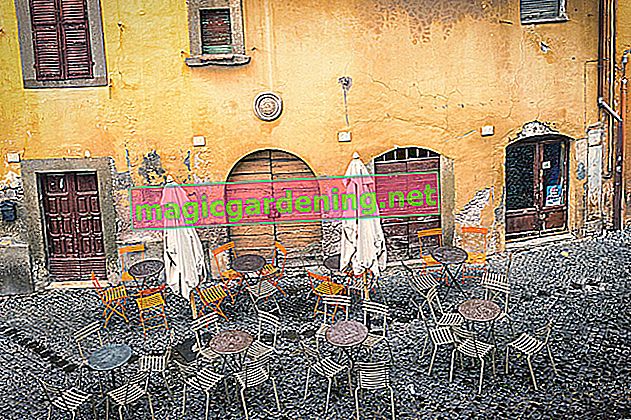
Pond border depending on the pond type
Depending on what type of pond you want, other requirements must be taken into account when designing the edge.
also read
- The attraction and function of the garden pond lighting
- The firethorn combines aesthetics and functionality
- Bulbs on orchids - information on function and cut
The types of ponds that need to be categorized functionally and aesthetically are:
- Fish pond
- Natural pond
- Swimming pond
- Formal (ornamental) pond
Fish pond
In a fish pond, the bank design is special in that it has to be tailored to the animals in terms of nutrient regulation and species justice. So it makes general sense to put a lot of heavily draining aquatic plants in a fish pond, as the fish food and the droppings tend to result in an excess of nutrients in the water. This pollutes the water quality and also the fish themselves.
You should plant species of nutrient-utilizing plants in each pond zone. At the water's edge, suitable species such as reeds or calamus also serve to offer the fish hiding places to rest and to spawn.
Natural pond
If you want to build a natural pond yourself, the foil method is the most common variant. You can freely choose the shape and size. Both in the overall design and in the bank design, naturalness has priority here. And that in both functional and aesthetic terms. On the one hand, you should keep the edge of the water body close to nature for the biotope to function independently. On the other hand, the natural style only comes into its own with a bank that comes close to that of natural ponds.
You should be more sparing with excessive stone constructions such as sea walls, because they appear inauthentic and take up valuable space that can be better used with fish and amphibian shelter. It is best to plant cattails, calamus or water fern at the edge of the natural pond. These plants draw nutrients from the pond water and prevent algae bloom.
Swimming pond
The most important thing about a swimming pond edge is of course at least one place to get in and out. A classic wooden walkway is ideal for a romantic, natural design. Or maybe you would like a comfortable lying area right on the water? Then we recommend extending the jetty protruding into the water with a terrace made of the same wood. If necessary, include a ladder in the planning that must be attached to the footbridge.
Formal (ornamental) pond
The focus of the ornamental pond is artistic design. The border of such a pond is therefore usually completely closed. In this way, the shape of the pond can be precisely defined and its geometry emphasized. Flat stone slabs are ideal as edge material for formal accuracy. Rectangular ponds in particular can gain even more architecturally cool elegance through fine-edged edge panels. Individual decorative objects can then also be exposed or installed on the edge strips, such as cere figures or buckets with accurately cut box tree bushes.








